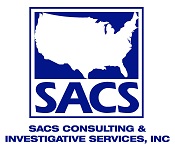During this time of COVID-19, employees are overly stressed. Some are working in difficult situations (i.e., healthcare workers, law enforcement). Others have been furloughed or laid off.
According to the CDC, job-related stress is our nation’s leading workplace health problem, creating significant productivity losses for large and small employers.
Employee Assistance Programs is offered by 97% of large employers, but only 5.5% of employees used it, even though it is free and completely voluntary. Why? Let’s dig into the reasoning, the EAP of new, and the benefits of having and using it.
Three Reasons for Lack of EAP Use
Distrust. In the 1950s, employees with substance abuse issues were forced to use the company’s EAP. This information was not confidential. Seventy years later, with many barriers to protect employees, the fallacy that “everyone will know” remains.
Poor promotion. EAPs now includes so much more than they did even five years ago. With the onset of COVID-19, most services are virtual offerings, including visits with qualified psychiatric and medical professionals. While many employees are still telecommuting, it’s vital to let them know what offerings are at their fingertips.
Stigma. We know that roughly 25% of all American adults will experience some form of depression in their lifetimes, yet, many individuals will not seek help because they consider it to be a sign of personal weakness. The National Alliance of Mental Illness (NAMI) has resources to stop stigmatizing mental health issues.
The EAP of Old versus the Wellness Program of New
Until recently, the EAP only covered behavioral health needs. An employee would call a 1-800 number provided to them by their employer, find a list of therapists on the plan, call and make an appointment, and be covered for six to eight sessions.
Even before COVID-19 hit the US, EAP plans were starting to address total employee wellness. Most sessions have been increased up to twenty-five sessions, all with no charge to the employees, including:
- Yoga Classes
- Meditation
- Child Care Resources
- Elder Care Resources
- Online therapy sessions
- Substance Abuse help
- Legal services
- Identify theft insurance and
- Financial coaching
Employee Assistance Programs Benefits
There have been two extensive studies from the Journal of Health & Productivity and 2020 Workplace Outcome Suite regarding overall employee health benefits when they used their EAP. Here is a recap:
- Ability to concentrate on work tasks increased by 28 percent
- Absenteeism dropped 27 percent
- Life satisfaction jumped 22 percent
- Workplace distress decreased 9 percent
- Employee engagement grew 8-9 percent
Also, because all sessions are currently offered online, there are no geographic limits to getting the right help for employees in need.
SACS Consulting and Investigative Services is an HR Resource
To ensure your employees are getting the help when and where they need it, look to our company to help you put proper procedures, policies, and training together on EAP and other Human Resources challenges. Please contact us at 330.255.1101 today for a free consultation.

